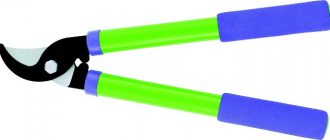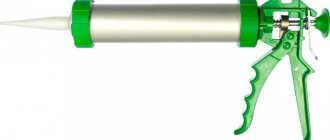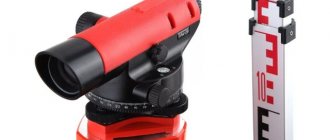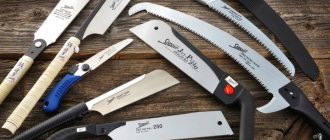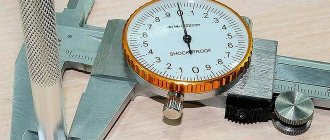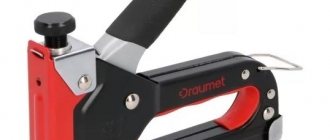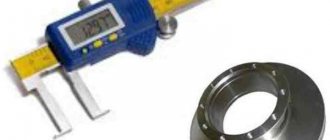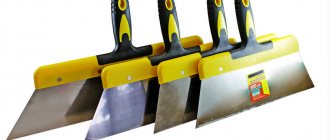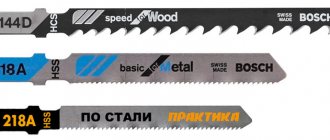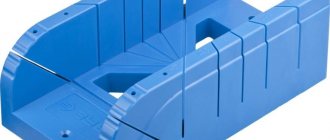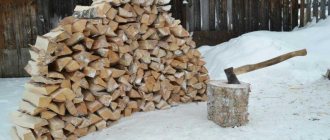A blowtorch is a heating device that produces high temperatures during the fiery combustion of flammable substances.
The combustion products that are produced during operation of the device form an elongated torch, and it has a very high temperature.
The gasoline lamp became the most popular . In addition to this modification, blowtorches, in which the flame source is natural gas, have become widespread. This type of blowtorch differs from other gasoline ones not only in the fuel spent on work, but also in the general design.
The volume of the tank used for fuel in the lamp can vary depending on the model of the device from 0.1 to two liters. The thermal power of such devices can range from 0.5 to 3 kW, depending on the method of fuel supply. The power of the light bulb will be regulated using a special tap, which opens the supply of burned gas.
Purpose and principle of operation
A blowtorch is a universal heating device that creates an open high-temperature directed flame during operation.
This device is used to perform various tasks, such as:
- Heating of parts and hammer soldering irons, soldering by melting solder directly with an open flame.
- Welding of some materials with a melting point not higher than 900 - 1100 degrees.
- Heating paint coatings, which makes them easier to remove, or completely burning them.
- Warming of metal water pipes in case of freezing; vehicle engine crankcases; frozen brake pads, sometimes even diesel fuel tanks. Attention! This action is very dangerous!
- Fire treatment of plants in late autumn or early spring can effectively destroy weevils, spider mites and other pests. This kind of superficial light firing is also performed with a blowtorch.
- If you have a special stand, you can cook or warm up food while traveling.
- Repair or installation of soft roofing, for example, roofing felt.
- Burning of threaded rusty connections, for example, cast iron or steel pipes, which greatly simplifies their disassembly (unscrewing).
- Lighting a fire, fireplace, stove in a bathhouse or coals in a barbecue.
Among other things, a blowtorch can be used to disinfest and disinfect premises, resin the skins of cattle and poultry, and heat metal pipes and rods for their subsequent bending.
The use of this device, in principle, is limited only by compliance with safety regulations, its operating temperature and thermal power.
The principle of operation of a blowtorch is to create a draft of an open flame by supplying fuel under excess pressure to the nozzle, where it heats up, evaporates and ignites.
This ensures complete combustion of the fuel mixture.
Application[edit | edit code]
The blowtorch is used for:
- heating parts and melting solder during soldering,
- welding of some materials at temperatures up to 1000–1100 °C,
- soldering iron heating,
- heating varnish and paint coatings to remove them,
- warming frozen water pipes,
- tarring pork carcasses (burning out bristles),
- disinfection and disinsection of premises,
- cooking in camp conditions (with certain devices - in particular, a specially curved pipe),
- dismantling rusted connections of steel and cast iron pipes.
Device and characteristics
In the standard version, the blowtorch consists of the following elements:
- The fuel tank is the basis of the structure on which all other elements rest. At the same time, it is the largest part of the device and is sealed. It has a closing hole (neck) for refueling.
- Handle – located on the side of the fuel tank, designed to hold and carry the device, which makes working with it convenient.
- Manual pump with valve - creates pressure inside the fuel tank. In some models it is combined with the filling neck. In other words, the pump is unscrewed from the housing, and fuel is poured into the mounting hole.
- Siphon tube - performs two functions simultaneously: it supplies fuel to the evaporator from the tank, and connects both of these elements into a single structure.
- Needle valve - provides adjustment of the fuel supply rate to the evaporator, thereby regulating the flame, located outside the siphon tube. The regulator is directed towards the handle.
- An evaporator is, roughly speaking, a container made in the form of a ring, inside which, when heated, the fuel changes from a liquid state to a gaseous state, that is, it evaporates.
- An ejector is a heated part, at the outlet of which the fuel mixture ignites when the device enters operating mode. Structurally, it is a continuation of the evaporator.
- Nozzle - sprays fuel in a directed stream towards the ejector through the evaporator, located at the end of a U-shaped tube that is part of the evaporator.
Some types of blowtorches have a small tray under the evaporator. A little fuel is poured into it and set on fire.
This is how the initial heating of the evaporator occurs, in which the fuel begins to evaporate when heated.
The device also includes a cleaning rod that can be used to clean the nozzle if it becomes clogged.
Material
The body of the blowtorch is made of steel. To increase reliability, the nozzle material can be cast iron, welded steel (the weld line is noticeable), or brass.
The handle can be metal, with plastic linings, or plastic on metal legs. The flame regulator (valve) is also made of fire-resistant plastic.
Dimensions and weight
The dimensions of a standard 2-liter liquid fuel lamp are 290x160x275 mm, they depend on the size of the fuel tank.
The volume of the latter for gasoline versions, as a rule, is in the range of 1.5 - 2.5 liters, and for gas models from 0.022 liters.
Some products have an enlarged tank of 3.5 liters or more. The dry device weighs 1.5 – 2.5 kg.
The diameter of the pump directly affects the rate at which excess pressure is pumped (the larger the better).
The diameter of the fuel tank is usually 100 – 145 mm.
Thermal power and operating temperature
Portable lamps have a thermal power of 0.5 - 3 kW, and this parameter is adjusted by changing the fuel supply rate.
The flame temperature in operating mode reaches 1.1 thousand degrees, for some models up to 2010 ° C, depending on the type of device and the specific model.
Operating time (continuous) depends on the capacity of the tank.
Thus, options operating on kerosene and gasoline for 1 - 2 liters can burn for about 50 - 100 minutes, and gas ones for 0.022 - 0.17 liters. approximately 75 – 90 minutes.
The fuel consumption of the former is on average 900 – 1200 g/h, and of the latter 110 – 180 g/h.
Blowtorches can produce 2 main types of flame in operating mode:
- Wedge-shaped - a wide, tapering wedge for local work. This type is typical for liquid fuel models.
- Needle-shaped - a narrow, sharp, long and concentrated torch that provides high temperature, focused in a small area. Suitable for fine and precise work.
Such a torch can be formed by gas models due to some design features.
It should be noted that the operating modes include both a concentrated blue high-temperature torch and a soft yellow flame.
Additional options
Blowtorches can be equipped with additional equipment and functionality to ensure ease of use.
First of all, this is a piezo ignition, which allows you to safely light a fire with the press of one button.
Another advantage over the classic versions is the remote burner, which is connected to the fuel cylinder with a flexible hose.
This design allows operation in any position, which is convenient if you need to direct the torch vertically up, down, or even turn the burner upside down.
Device[edit | edit code]
Blowtorch structure
A blowtorch has a fuel tank. A burner is attached to the top of the tank. The reservoir is closed with a lid with a seal. Using a hand pump, excess pressure is created inside the tank. Under the influence of excess pressure, fuel from the tank flows through a tube and valve to the burner nozzle. Before entering the nozzle, the fuel, passing through a tube washed by the burner flame, heats up and evaporates, which increases the completeness of combustion. The burner is an ejector in which, due to draft, the movement of air and combustion products is created. The device is specified, for example, in the PST standard of the Ukrainian SSR 1312-80.
Typical lamp composition:
- the fuel tank is the largest element of the blowtorch;
- pen;
- hermetically sealed hole - for pouring fuel into the tank;
- pump with valve - to create excess pressure inside the tank;
- siphon tube for supplying liquid fuel from the tank to the evaporator;
- a needle valve, mounted on the outside of the siphon tube and used to regulate the fuel entering the evaporator;
- an evaporator in which, after warming up, the incoming fuel passes into a gaseous state;
- nozzle - located at the end of a tube extending from the top of the evaporator, directs a stream of gaseous fuel through the evaporator to the ejector;
- the ejector is the hottest part of the lamp and is a continuation of the evaporator; in operating mode, it is at the exit from the ejector that the air-fuel mixture begins to burn;
- wire for cleaning the nozzle - used as needed;
- fuel is not a part, a consumable material, the quality of which determines the smoke of the flame, clogging of the nozzle and the risk of explosion. For gasoline lamps, we recommend gasoline with an octane rating of no more than 80 or “Kalosha” gasoline (synonym: Nefras C2 80/120).
GOST
GOST 12.2.008-75 applies to blowtorches, which specifies the safety requirements for equipment and apparatus for gas-flame processing of metals.
Marking
The full brand or trademark is applied to the handle-bracket or the reservoir of the blowtorch.
Domestic products are often designated as LP (blowtorch).
The marking may also indicate the capacity of the fuel tank in liters, for example, LP-2.
Examination
A blowtorch is a fire-hazardous device, and therefore it is necessary to periodically check its condition.
The tightness and tightness of the device connections is checked at least once a month, and the frequency of checking the hydraulic gasoline supply system is at least once a year.
Types of blowtorches and their prices
The main type division of blowtorches is carried out according to the type of fuel used:
Gasoline
The most common.
The temperature of the created flame is more than 1 thousand degrees; to adjust the fuel supply, the devices are equipped with a screw.
Such products have a classic layout of a fuel tank with a burner mounted motionlessly on top.
Less common are models with an external burner.
Kerosene
Structurally similar to the previous version, they are mainly used for melting solders and heating large soldering irons.
The difference lies in the increased diameter of the nozzle, and in older models there is also the presence of an ejector with a coil, which leads to intense heating of the fuel.
Design differences are due to different combustion temperatures of gasoline and kerosene.
Alcohol
Rarely used, produced in limited quantities, they are a mini blowtorch with a fuel tank volume of no more than 200 ml.
Used for precision work, in particular when soldering jewelry.
They have been almost completely replaced by gas-powered models.
NOTE:
Rarely on sale, but still found is a diesel blowtorch that runs on diesel fuel, but it is very demanding on the ambient temperature and is less practical than other options.
Nozzle blowtorches, that is, models that run on liquid fuel, can have a steel or cast iron nozzle.
The latter provide more stable operation and are less susceptible to burnout.
Another classification of devices is based on the presence of a pump:
- Blowtorches with a pump are options fueled with gasoline and kerosene. Fuel supply is ensured by creating pressure in the tank with a built-in pump.
- Models without a pump - all versions run on alcohol, some petrol miniature models. Their peculiarity lies in the small size of the fuel tank, on top of which there is a chute under the burner itself. Fuel is poured into it and ignited when ignited. Gradually the tank warms up, due to which the temperature inside it increases, and hence the pressure, intense evaporation of fuel occurs and it enters the nozzle. After the flame flares up, the tank is heated by the operating burner.
In addition to liquid-fuel blowtorches, the cost of which usually ranges from 800 to 1,300 rubles, gas models are no less common.
Gas blowtorches
They operate without air pumping, since the fuel container initially has an excess pressure of a flammable substance inside, often butane, propane, isobutane.
A gas blowtorch can be powered from a disposable or refillable cylinder.
The device body can be either plastic or metal.
The cost varies widely and can range from 1500 – 3000 rubles and more.
Universal blowtorches can operate with two types of gas cylinders.
The cylinders are connected to the burner using threaded fasteners, and it is possible to use an intermediary in the form of an extension hose.
It should be noted that blowtorches are compact, portable devices, which is a definite advantage when using them.
The exception is gas burners connected to a household cylinder, which is equipped with kitchen stoves, via a hose.
Use of a gasoline blowtorch
Reworking the soldering iron tip.
A couple of decades ago, a blowtorch was used everywhere when it was necessary to heat a surface or metal. It was often used in production, because there was no replacement for it. Now, with modern technologies, alternative options have appeared, so the blowtorch has begun to be slightly replaced. But it is not always convenient to use modern technology. There are times when it is necessary to heat the material where there is no electricity, so you cannot use, for example, a pre-prepared electric hair dryer.
If it is not possible to use a burner in the cold in winter, then a blowtorch comes to the rescue. Almost every man on the farm still has a blowtorch from Soviet times, which is periodically used in the following cases:
- There is often a need to use a soldering iron, and this device is excellent for heating the soldering iron itself and the solder;
- if it is necessary to weld metals with heating temperatures up to 1000 degrees;
- melt metal at a heating temperature of up to 900 degrees;
- when it is necessary to remove old varnish from metal objects;
- for heating and thawing frozen water in pipes and sewers;
- in cold weather, car engines are warmed up using a blowtorch;
- sometimes you need to disassemble threaded connections that have rusted from age; a blowtorch is perfect for this job;
- When breeding livestock, this device is used to resin the skins of slaughtered animals.
How to choose a blowtorch?
To select the optimal model for specific tasks, you need to pay attention to the following criteria:
- Design. The vast majority of blowtorches have a one-piece design, however, some models are still equipped with an extension hose, usually 1.5 m. If you plan to work with weight, this design is preferable, especially considering the fact that the burner itself can be attached to the fuel at any time reservoir. Liquid fuel options take much longer to prepare for operation, and if you need to frequently light the flame, it is better to choose gas models with piezo ignition.
- Fuel. Gasoline lamps can form a flame with a temperature of 1 thousand - 1.1 thousand degrees, and to refill the tank it is enough to use the services of any gas station. For gas options, the cost of refueling is higher, since gas often has to be purchased in cylinders. The other side of the coin is that gas models are lighter, and therefore better adapted for suspended operation.
- Gas cylinders come in two types: with and without a valve. The first type allows you to adjust the gas flow, thereby regulating the size and temperature of the flame jet. Cylinders of the second type (pierceable) are cheaper, but naturally do not have those advantages.
- Capacity of the fuel tank. To operate gasoline models for an hour, you must choose a model with a capacity of 1 liter or more. Mostly lamps of this type are not manufactured in smaller volumes, for this reason there are no difficulties with the choice.
- Service. Ease of maintenance is important for blowtorches, since during operation there will periodically be a need to clean the nozzle and flush the fuel tank from sediment. It may also be necessary to clean and repair the hand pump. For this reason, it is desirable that the lamp be completely disassembled, which will allow replacing failed elements, for example, sealing gaskets.
The manufacturer usually provides a one-year warranty for blowtorches, while all products are designed to last for 5 years.
Gasoline blowtorch: technical characteristics
Tinning the soldering iron tip.
This useful tool for everyday life is produced in Russia by several manufacturers. They all have different dimensions and fuel consumption. Having analyzed the characteristics, we can highlight the following general parameters:
- the capacity of the tank is one of the main components of the overall presentation of the lamp, varies from 0.5 l to 2 l;
- despite the capacity, there is a set indicator for the maximum filling of the tank from 0.4 l to 1.5 l;
- almost all blowtorches have a maximum pressure during operation not exceeding 0.3 MPa;
- fuel consumption is also calculated, which does not exceed 1.2 l/h;
- the diameter of the tank depends on its capacity: the minimum parameter is 100 mm, the maximum is 145 mm;
- the weight of a gasoline blowtorch without fuel is from 1 kg to 2 kg;
- manufacturer's warranty – 1 year;
- The service life of any blowtorch is 5 years.
What you need to know about blowtorches?
When using a blowtorch, it is important to follow a few simple rules to avoid its explosion:
- Only use fuel specified by the manufacturer. For example, kerosene models are prohibited from being filled with gasoline. Fortunately, there are lamps designed to work with gasoline and kerosene, which is indicated in the passport (instructions) for the selected model.
- When the burner is operating, it is prohibited to open the filler neck of the fuel tank, as this will necessarily lead to the release of explosive vapors, and consequently to an explosion. Because of this, you cannot open the neck until the burner has completely cooled down.
- During operation, the fuel tank should have a temperature of no more than 50 degrees.
It is recommended to refuel gasoline blowtorches with “Galosh” or regular low-octane gasoline.
If the octane number is above 80, such fuel contains many different additional components, which quickly leads to clogging of the burner nozzle and clogs the lamp elements with sediment.
